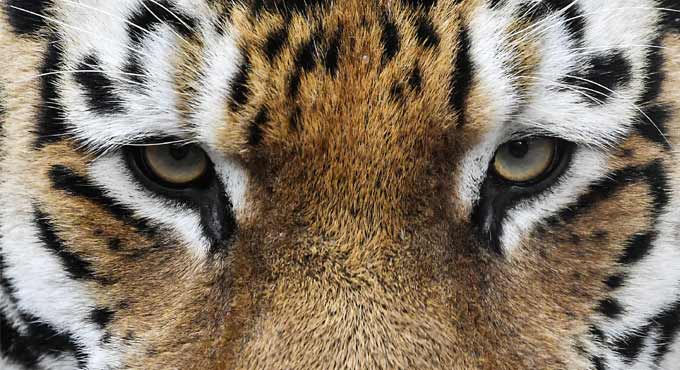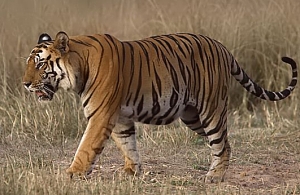 |
| Close up of a tiger |
In the wild places of Africa and Asia, conflicts between big cats and people are inevitable when the two species live side-by-side. Whenever an incident of an attack arises, the response is to relocate the big cat so that it doesn't stray into human settlements. However, this simple and direct method is not working out in the end. One such example occurred sometime ago when a six-year-old lioness named Magigi was captured and relocated to Botswana's Central Kalahari Game Reserve after repeatedly killing cattle. Although she spent most of her life in the reserve, Magigi strayed outside its boundaries after a year and was shot dead by a farmer. New research has shown that lions continue to prey on livestock and threaten villagers' livelihoods after being relocated. In Botswana, 13 relocated lions that were observed by a team of scientists died within a year of being moved. Some were killed by people in retaliation, while others probably succumbed to the stress.
 |
| A lion in Botswana |
In India, a tiger relocation project took place in 2018 when two tigers from Madhya Pradesh, a male named Mahavir of Kanha National Park and a female named Sundari of Bandhavgarh National Park, were relocated in Odisha's Satkosia Tiger Reserve. The purpose of the relocation was to increase the state's tiger population. But within weeks, the project ran into trouble with villagers living on the edge of the reserve protesting the tigers' relocation. The issue eventually escalated into a political matter. Angry tribal people attacked forest officials as they were evicted from the core area to the outer fringes of the reserve. Within months of relocation, Mahavir was killed by poachers and later Sundari had to be moved to an enclosure after killing two villagers. The project was ultimately suspended.
 |
| A tiger in Bandhavgarh National Park |
I used to think that relocation of wild carnivorous animals away from human habitations is an effective way to minimize conflicts. However, a 1997 review of studies from around the world has indicated that most carnivores try to return to areas in the vicinity of human settlements after being relocated far away. An investigation from 2011 confirmed that the method is more expensive and less effective than alternative methods. This goes to show that mitigating human-wildlife conflict is a very complex issue that requires a multi-step approach. But based on the global studies, I don't think relocating wild carnivores should be discontinued. It is very important to monitor individual big cats and other carnivores after they have been relocated to see how long they spend time far away from human settlements and when they start coming back. However, in addition to relocating wild carnivores, it is highly crucial to improvise human settlements by building some kind of a barricade in the vicinity to prevent the animals from re-entering. There is also a great need to conduct awareness programs geared at educating local villagers about the importance of wild carnivores, the roles they play in nature, and why retaliatory killings are not the answer in preventing human-wildlife conflicts. Populations of wild carnivores have depleted dramatically over the years, with Africa's lion populations having plummeted by 43 percent in the past 20 years. Much of the depletion is attributed to development, along with reduction in prey populations and retaliatory killings. It is high time to take intense preventive measurements to prevent conflicts between wild carnivores and people.
No comments:
Post a Comment